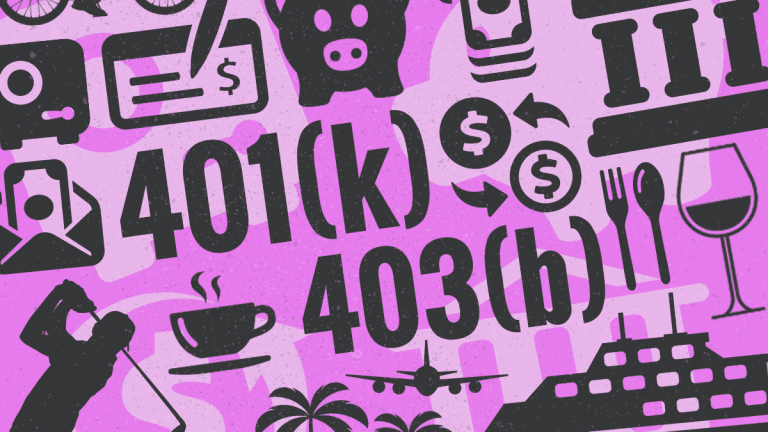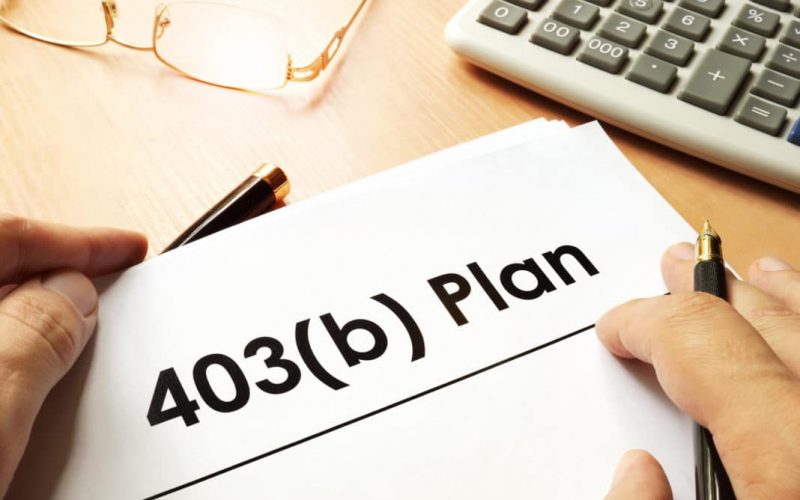Have you ever thought about what you will do after you retire? After teaching for years in schools, after working as a librarian, or working in any public office.do you ask yourself, what are my plans, what are the available retirement plans available for someone like me working in a public sector? So many questions right, worry no more, this article was made just for you. This article will serve as a guide in showing you what is a 403(b) plan, what are their withdrawal rules. Also, it will guide you on 403(b) vs Roth ira. It will also show you the difference between 401(k) and 403(b).

Grab your seat, relax, learn and enjoy. Do not go anywhere, we will be here with you every step of the way.
What Is A 403(b) Plan?
A 403(b) plan is a retirement plan for several employees of public schools and tax-exempt companies. Individuals involve are teachers, school administrators, professors, government employees, among others.
The 403(b) plan is related to the 401(k) plan. Each allows employees a tax-advantaged means to save for retirement. However, investment options are usually more limited in a 403(b), and 401(k)s is only open to private-sector employees.
Additionally, this plan permits employees to contribute part of their salary to the plan. The employer may also contribute to the plan for employees if he deems fit. However, as mention earlier, there are significant tax advantages for participants in this plan. It includes pre-tax contributions to a the plan. Also, earnings on these amounts are not taxed until they are distributed from the plan
Notwithstanding, the terms of the employer’s 403(b) plan dictate when an employee may register. However, qualified employees are entitled to participate in the plan as of their employment commencement date (the universal availability rule). Employees should check with their employer to determine how to register for the plan.
Types Of Contribution In a 403(b) Plan
In this plan, there are four types of contributions to be made.
31. Elective deferrals
There are employee contributions under a salary reduction agreement. This agreement permits an employer to keep money from an employee’s salary and deposit it into a 403(b) account.
#2. Non elective employer contributions
This is a type of contribution that is not under a salary reduction agreement. It includes matching contributions, discretionary contributions, and certain mandatory contributions made by the employer. Income taxes are only paid only when they are being withdrawn. Income taxes on these contributions are paid only when they are withdrawn.
#3. Designated Roth contributions
These are elective deferrals that the employee chooses to include in gross income. Separate accounting records must be kept for all contributions, gains, and losses in the designated Roth account.
#4. After-tax contributions
These contributions (otherwise known as voluntary contributions that are not designated Roth contributions). They are made by an employee, which are recorded as in the year contributed. It is also included in the employee’s gross income for income tax purposes.
Contribution Limits
The basic contribution limits are $19,500 in 2020 and 2021. The compound of employee and employer contributions is limited to the lesser of $58,000 in 2021 (up from $57,000 in 2020) or 100% of the employee’s most recent yearly salary.
Now that will have discussed this plan and their contributions, let us take a closer look at their withdrawal rules.
Can I Withdraw From My 403B?
Current IRS rules let you take money out of your 403(b) account without penalties when you: Turn 59 to 60 (if plan allows), If you are 55 or older, you can retire or leave your job in the year you reach that age.
How do I qualify for 403b?
Participants must be working for a nonprofit organization that is exempt from federal income tax. Education professionals, government workers, medical professionals, and library staff are all represented here.
403(b) Withdrawal Rules
There are some rules you will need to know about 403(b) withdrawals. These rules include:
- Standard withdrawal
- Early withdrawals
- Required minimum distributions
- Rollover options
Standard Withdrawal
To obtain funds in your retirement account, you’ll need to pass through one of the following processes:
- Reach age 59 ½
- sever employment
- Become disabled
- Encounter a financial hardship
- Die (although, beneficiaries will be able to make withdrawals)
Financial Hardship:
As stated by the IRS. You may ask for a financial hardship withdrawal if you have no other available source of money. Also, it must be allowed by your school district plan document. Special forms are needed to request a hardship withdrawal.
Additionally, any withdrawal from a standard 403(b) account, the amount is given to you is taxed at your normal income tax rate. If you have a Roth account, you won’t pay any tax (because you will have paid them in the year you contributed).
Importantly, you’re not expected to take a deal from your 403(b) when any of the above events happen. You can just leave the money in your account, although that’s rarely the best option.
Early Withdrawals
In some instances, you can make early withdrawals from a 403(b) without being penalized.
Just as 401(k), 403(b) account holders can start receiving distributions in the year they leave work as long as they turn 55 or older in that same year. This is regularly called the rule of 55. The greatest caution is that all funds must remain in the 403(b) plan for early withdrawals to remain penalty-free.
Required Minimum Distributions
Similar to 401(k) or an IRA, a 403(b) account has required minimum distributions (RMDs) starting at 72. RMDs are calculated based on the account balance at the end of the prior year and the IRS life expectancy tables.
Most plan administrators will automatically calculate and deliver RMDs to participants when they turn 72. Failure to take the distribution, however, will be subject to a 50% tax, and you will still need to take the distribution.
Rollover Options
Rolling over a 403(b) into another retirement account is apparently the best tactic for someone after they change jobs or leave the workforce. 403(b) plans usually charge administrative fees on top of fees for the mutual fund options in the plan. Rolling over funds to a different account can bring less expensive and more flexible options.
403(b) vs Roth Ira
Retirement savers face difficulty when deciding between a 403(b) vs a Roth IRA. Pay taxes now so you may not have to pay later or skip taxes today and pay them in the future. Now let’s see which one is better and their major differences.
There are several distinguishing factors between Roth IRAs and 403(b)s. Perhaps the major difference between these is their individual contribution limits. Hence, If you have a decision between these accounts, here are some comparisons to pay attention to:
Contribution limits:
For 403(b) the contribution limit as of 2020 is $19,0500 while for Roth Ira it is $6000.
Participation:
With a 403(b) plan, a public sector, teachers, or ministers can participate. While with Roth Ira only Single filers making up to $139,000 and married couples filing jointly making up to $206,000 (for 2020).
Employer’s Contribution
An employer can decide to contribute in a 403(b) plan. However, for a Roth Ira, an employer cannot contribute to the retirement account.
Required Monthly Distribution(RMD)
A 403(b), there is an RMD beginning at 72. In contrast, there is no required monthly contribution for Roth Ira, not while the owner is still alive.
Longevity
With the 403(b) plan, the account is yours as far as the employer offers it and you must stay with that job. However, regardless of your employer or job status, you can keep your funds in Roth Ira.
What Are the Advantages of a 403(B) Plan?
With qualified Roth 403(b) withdrawals, earnings and returns are deferred until withdrawal. Employer-specific matching contributions for 403(b) employees vary. Some 403(b) plans vest funds immediately, unlike 401(k)s. Some nonprofits and government agencies allow employees with 15 or more years of service to make catch-up donations. This provision allows you to contribute an additional $3,000 per year up to a lifetime maximum of $15,000, unlike retirement plan catch-up provisions that require you to be 50 or older.
Lastly, certain 403(b) plans are exempt from the stringent Employee Retirement Income Security Act oversight regulations.
What Are the Drawbacks of a 403(B) Plan?
Withdrawals of funds from a 403(b) plan prior to age 59 and a half are subject to a 10% penalty. This penalty may be avoided under certain conditions, such as leaving an employer at age 55 or older, incurring qualified medical expenses, or becoming disabled. Plans may also provide fewer investment options than other types of retirement plans. Accounts in 403(b) plans not protected by ERISA may not offer the same level of protection from creditors as accounts in plans requiring ERISA compliance. Exemption from nondiscrimination testing is a further disadvantage of non-ERISA 403(b) plans. This testing is conducted annually to ensure that management-level or highly compensated employees do not receive a disproportionate amount of benefits from a given plan.
Difference Between 401(k) And 403(b)
Both plans have a lot in common, but here’s what sets them apart:

Eligibility:
401(k) plans are open for-profit companies, and 403(b) plans are given by tax-exempt organizations, such as schools, universities, hospitals, nonprofit and religious organizations.
Investment Options:
403(b) plans only cover mutual funds and annuities. However, 401(k) plans cover mutual funds, annuities, stocks, and bonds.
Employer Match:
Both plans offer employer matching, but less employers offer matches with their 403(b) plans. If an employer who offers a 403(b) does offer a match, they have to follow the regulations created by ERISA—the Employee Retirement Income Security Act—which was passed in 1974. Complying with this regulations cost time and money hence most employers want to avoid them.
Cost:
With the 403(b) plan, government would not want to place extra burdens on nonprofit organization by giving higher administrative costs . However, 401(k) plans are more expensive for employers. But never mind, this doesn’t really affect you as an employee.
Conclusion
In conclusion, as an employee working under a public school, or as a doctor or government employee. You have no worries, there are retirement plans open to you. And you should be aware of the 403(b) withdrawal rules open to you. Good luck as you choose which of them you want to participate in.
403 (b) FAQ
What is the difference between a 401k and a 403b retirement plan?
Both plans have a lot in common, but here’s what sets them apart
- Eligibility
- Investment Options
- Employer Match
- Cost:
Can you lose money in a 403 B?
If you take money out of your 403(b) before the age of 59 1/2, you’ll owe a penalty of 10%. You’d also be squandering those dollars’ growth potential and robbing your future self. Stop right there! To clarify, distribution is the penalty-free withdrawal of funds from a 403(b) plan.






